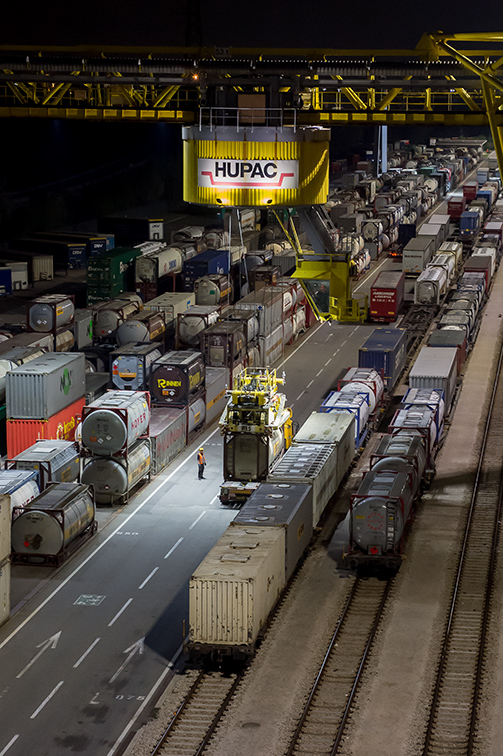Just yesterday I saw another tender calling for 40,000 lumen crane lights. Here’s why there are better ways to perceive lighting capabilities:
While the tender asked for floodlights in terms of their lumen output only, it failed to request the Lux level on the ground, which is the most important parameter for practical use, as well as the only relevant value requested by safety normative.
This is despite it being the light that reaches the ground, the containers, the people, that creates a safe working environment. Lumen is a measure of the output of the light, while Lux level is what’s actually reaching the operational area, and it only partially relates to lumen output.
Specifying a particular lumen output, in this case 40,000lm does not guarantee any Lux level on the ground as it doesn’t take into consideration the quality and efficiency of light distribution.
You can have a 40,000 lumen floodlight with inefficient lenses, resulting in a much lower lux level on the target area compared to a 35,000 lumen floodlight from Midstream that uses optimal distribution specifically developed for this application. Such comparison has been proven in the past in numerous trials.
So, don’t be misled by the appeal of a “bigger is better” approach to lighting. The ultimate goal is to maximise efficiency, using the least amount of power, and therefore lumens, to reach the only metric that actually matters, which is visibility, in the form of Lux level and uniformity.
At the end of the day, safety is too important, and if an accident occurs as a result of poor lighting, it won’t matter where the responsibility for missing the crucial distinction between lumen and Lux rests.

Lux v lumen
Taking all this into consideration, lumen levels are only helpful when also considering Lux levels. The output of the floodlight will mean nothing if you fail to consider its performance once it hits the ground. Similarly, uniformity is also a vital metric that is often overlooked when considering safe and effective lighting. Uniformity, in this instance, refers to how evenly the lighting is distributed once it reaches the ground.
What we often see when assessing existing lighting infrastructures are cases of unequal lighting distribution, with bright spots that raise the average of Lux level measurements on the ground, hiding the presence of dimmer areas – and therefore failing to illuminate potential safety risks. This disparity in Lux levels is often caused by poor quality lighting equipment.
With no International Maritime Organization (IMO) standards currently in place for Lux levels on cranes used within ports or terminals, we endeavour to guide the industry and tailor our solutions to be effective and durable.
While safety is one of the primary focuses when considering lighting, it is important that it also delivers good value for money. For example, LED lights often have a 10-year lifecycle, but on a terminal crane, some can be rusted or rattled to pieces within a year due to the volatile and highly saline conditions.
This is why Midstream products are built using marine-grade steel, ensuring they are light-weight and engineered to avoid early failure. We conduct vibration tests to 100,000 cycles and salt water immersion tests for 1,000 hours. We have inbuilt moisture and particulate protection and bespoke bracketry. All this should boost the operational lifecycle beyond 10 years – we estimate up to 15 years – but could even go beyond this.
The plug-and-play design means they are easy to install. Downtime is minimised which is a huge benefit for port performance especially when you are dealing with pandemic-related backlogs.
So, why are so many ports and terminals tendering for crane lighting at this time? Improved lighting enables crane operators to work faster and smarter. It improves visual definition of, for example, the alignment of the spreader with container when engaging twistlocks. In more automated environments, cranes also need this improved visual definition to interpret symbols and barcodes correctly.
Safety and efficiency are obvious motivating factors for upgrading lighting systems, but COP26 is another: Around 1% of the world’s carbon emissions come from lighting. That may not sound like much, but it is significant, and as other industries reduce their emissions to meet 2050 targets, it will become more so. Upgrading heritage systems to quality LED lighting can reduce energy consumption by over 70%.
Ultimately, we understand that operators need cranes to operate efficiently. They need lighting that keeps people and cargo safe whilst improving environmental performance – all with a favourable total cost of ownership.
My final words of advice would therefore be:
- Be clear on what you want to achieve and work with a solution provider who genuinely understands your objectives from a technical perspective.
- Don’t sacrifice tomorrow for a few hours today. You don’t have to do an upgrade all in one go, and it often makes better sense to break your goals down into multiple steps.
- Do the maths. Look at your energy savings versus the cost of the project, and you will find a great avenue for building further on your business plans.
With Midstream, lighting is about collaboration and quality. Your objectives are our objectives, and we will work to provide the most efficient, reliable and cost-effective solutions possible to ensure the safety of your workers and the highest ROI.
